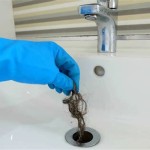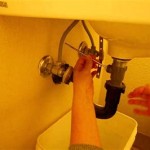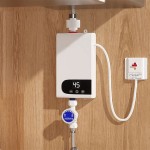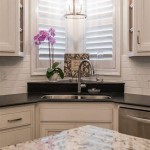Understanding Water Line Splitters for Sinks: A Comprehensive Guide
Water line splitters, also known as water diverters or tee adapters, are essential plumbing components that allow for the connection of multiple water-using devices to a single water supply line under a sink. These devices are commonly used to connect appliances such as dishwashers, ice makers, water filters, and instant hot water dispensers. Understanding the functionality, types, installation, and maintenance of water line splitters is crucial for ensuring efficient and safe plumbing systems within residential and commercial properties.
The fundamental purpose of a water line splitter is to divide the flow of water from a single supply line into two or more separate lines. This eliminates the need for installing additional plumbing lines directly from the main water supply, which can be a complex and costly undertaking. Instead, a splitter provides a convenient and cost-effective solution for adding functionalities that require a water source to an existing sink setup. This is particularly beneficial in kitchens and bathrooms where space is limited.
The selection of a suitable water line splitter depends on several factors, including the size and type of the existing plumbing lines, the specific application, and the pressure requirements of the connected appliances. Compatibility with the existing plumbing materials—copper, PEX, or CPVC—is paramount to prevent leaks and ensure a secure connection. Furthermore, the splitter must be able to withstand the water pressure fluctuations within the plumbing system to avoid damage or failure.
Key Point 1: Types of Water Line Splitters
Various types of water line splitters are available in the market, each designed for specific applications and plumbing configurations. The most common types include:
Compression Tee Adapters:
These are widely used due to their ease of installation and compatibility with copper pipes. They utilize compression fittings that tighten around the pipe, creating a watertight seal. Compression tee adapters are suitable for relatively low-pressure applications and are a popular choice for connecting water filters or ice makers.PEX Tee Fittings:
PEX (cross-linked polyethylene) tubing has become increasingly popular in plumbing due to its flexibility and durability. PEX tee fittings are designed specifically for use with PEX tubing and utilize crimp rings or expansion fittings to create a secure connection. These fittings are suitable for both hot and cold water lines and can handle higher water pressures compared to compression fittings.CPVC Tee Fittings:
CPVC (chlorinated polyvinyl chloride) is a rigid plastic pipe often used for hot water lines due to its high-temperature resistance. CPVC tee fittings are designed for solvent welding, creating a permanent and leak-proof connection. These fittings are typically used in more demanding applications where high water temperatures are expected.Push-Fit Tee Fittings:
Also known as quick-connect fittings, these are designed for ease of installation without the need for special tools or soldering. Push-fit fittings utilize an internal mechanism that grips the pipe when it is inserted, creating a watertight seal. They are compatible with copper, PEX, and CPVC pipes, making them a versatile option for various plumbing applications. However, verifying compatibility with the specific pipe material is essential prior to installation.Threaded Tee Fittings:
These fittings utilize threaded connections, typically NPT (National Pipe Thread), to connect to the water supply line and the connected appliances. Threaded tee fittings require the use of pipe sealant or Teflon tape to ensure a watertight seal. They are commonly used in older plumbing systems or in applications where easy disassembly is required.The selection of the appropriate type of water line splitter depends on the existing plumbing materials, the water pressure requirements, and the ease of installation desired. Consulting a plumbing professional is recommended for complex installations or when unsure about the compatibility of different fitting types.
Key Point 2: Installation Process
The installation of a water line splitter requires careful planning and execution to ensure a leak-proof and reliable connection. The following steps outline the general procedure for installing a typical water line splitter:
1. Preparation:
Begin by shutting off the water supply to the sink. This is typically done by closing the shut-off valves located under the sink. It is also advisable to drain any remaining water from the pipes to prevent spillage during the installation process.2. Disconnecting the Existing Water Supply:
Carefully disconnect the existing water supply line from the faucet. Use appropriate wrenches to loosen the connections and avoid damaging the fittings. If the existing supply line is rigid copper, it may be necessary to use a pipe cutter to create a clean cut.3. Installing the Water Line Splitter:
Connect the water line splitter to the existing water supply line. Ensure that the fitting is properly aligned and tightened to prevent leaks. For compression fittings, tighten the compression nuts securely using two wrenches. For PEX fittings, use a crimp tool or expansion tool to create a secure connection. For CPVC fittings, apply solvent cement to both the fitting and the pipe before joining them together.4. Connecting the Appliance Supply Lines:
Connect the supply lines from the appliances (e.g., dishwasher, water filter) to the remaining outlets on the water line splitter. Again, ensure that the fittings are properly aligned and tightened to prevent leaks. Use appropriate fittings and adapters to ensure compatibility between the splitter and the appliance supply lines.5. Testing for Leaks:
Once all connections are made, slowly turn the water supply back on and carefully inspect all connections for leaks. If any leaks are detected, tighten the fittings further or re-apply sealant if necessary. It is recommended to wrap Teflon tape on threaded connections before tightening to ensure a watertight seal.6. Securing the Plumbing:
Once the installation is complete and no leaks are detected, secure the plumbing lines and the water line splitter to prevent them from moving or vibrating. Use pipe clamps or other appropriate securing devices to ensure that the plumbing is stable and secure.Following these steps carefully and paying attention to detail is crucial for a successful and leak-free installation. Consulting a plumbing professional is recommended for complex installations or when unsure about any aspect of the installation process.
Key Point 3: Common Issues and Troubleshooting
Despite careful installation, certain issues can arise with water line splitters over time. Addressing these issues promptly is essential to prevent water damage and ensure the proper functioning of the plumbing system. Here are some common problems and troubleshooting tips:
Leaks:
Leaks are the most common issue associated with water line splitters. Leaks can occur at the connection points between the splitter and the water supply lines or at the connection points between the splitter and the appliance supply lines. To troubleshoot leaks, first, identify the source of the leak. Tighten the fittings at the leak location using appropriate wrenches. If tightening the fittings does not resolve the leak, disassemble the fitting and inspect the threads or sealing surfaces for damage. Replace any damaged components and re-apply sealant or Teflon tape before reassembling the fitting.Reduced Water Flow:
A reduction in water flow can occur if the water line splitter is partially blocked by sediment or debris. This is more likely to occur in older plumbing systems with hard water. To troubleshoot reduced water flow, first, shut off the water supply to the sink. Disconnect the water line splitter and inspect it for any obstructions. Clean the splitter thoroughly using a brush or compressed air to remove any sediment or debris. Reinstall the splitter and test the water flow.Corrosion:
Metal water line splitters can corrode over time, especially in areas with hard water or high humidity. Corrosion can weaken the fittings and eventually lead to leaks. To prevent corrosion, consider using water line splitters made from corrosion-resistant materials such as brass or stainless steel. Regularly inspect the splitter for signs of corrosion and replace it if necessary.Compatibility Issues:
Using incompatible fittings or adapters can lead to leaks or other problems. Ensure that all fittings and adapters are compatible with the existing plumbing materials and the appliance supply lines. Using the wrong type of fitting can damage the pipes or fittings and create a safety hazard.Incorrect Installation:
Incorrect installation is a common cause of leaks and other problems. Follow the installation instructions carefully and ensure that all connections are tight and secure. If unsure about any aspect of the installation process, consult a plumbing professional.Regular inspection and maintenance of water line splitters can help prevent these issues and ensure the long-term reliability of the plumbing system. Addressing problems promptly can prevent costly water damage and ensure the efficient operation of the connected appliances.
In conclusion, water line splitters are invaluable components for efficiently managing water supply to multiple devices under a sink. Choosing the right type of splitter, implementing careful installation practices, and undertaking regular maintenance are key to long-term operational success. By understanding the nuances of these components, home owners and professionals can optimize plumbing systems for various applications.

Upstream Water Supply Line Tee Splitter Hydroviv

Downstream Under Sink Water Line Splitter Valve Hydroviv

Upstream Water Supply Line Tee Splitter Hydroviv

Keeney Lead Free Add A Tee Adapter 3 8 In X The Supply Line Connectors Department At Com

How To Add More Than One Outlet Your Water Supply

Bidet Connector 3 8 Brass Compression Angle Stop Valve Water Line Splitter Diverter For Sink

2 Pcs Trap Diverter Valve Sprayer 3 4 Bathroom Sink Adapter Water Hose

Downstream Under Sink Water Line Splitter Valve Hydroviv

Faucet Adapter Diverter Valve Sink To Hose Water Line Splitter Wal Com

Faucet Adapter Diverter Valve Sink To Hose Water Line Splitter Wal Com







